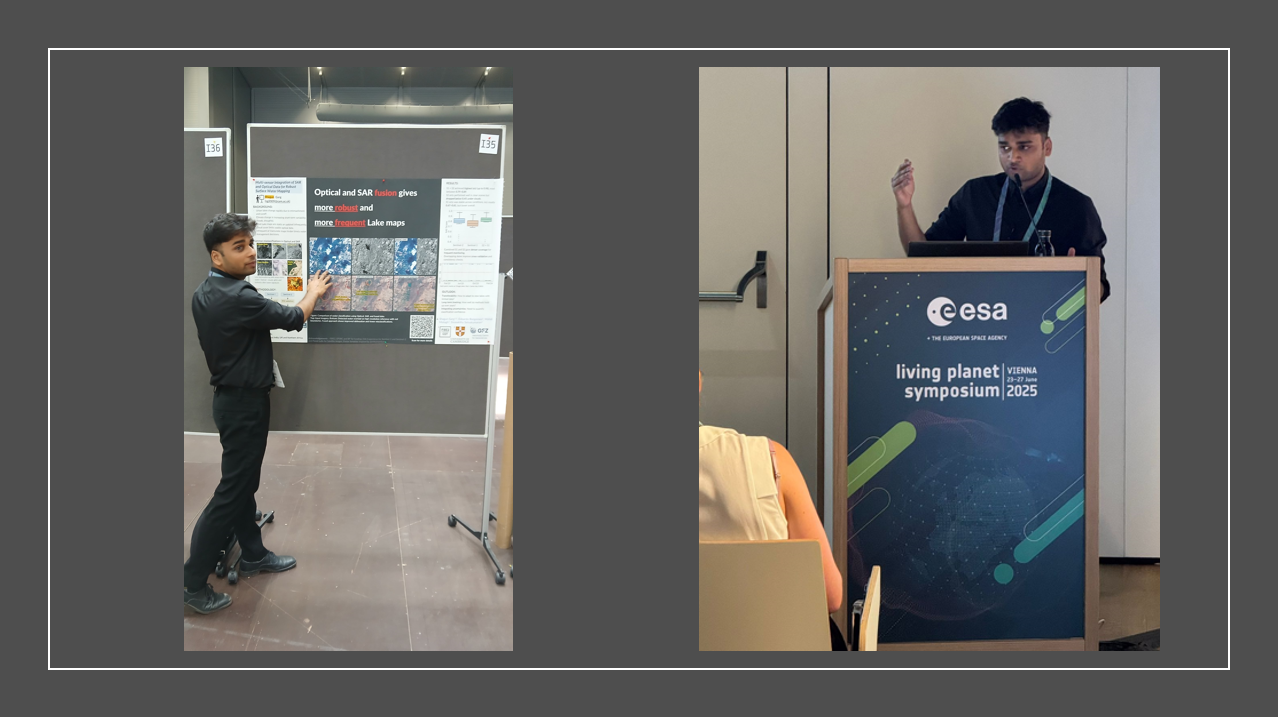
Submitted by Paula Block on Wed, 09/07/2025 - 17:01
Shagun Garg, a FIBE2 second-year PhD student , recently presented his research at the prestigious ESA Living Planet Symposium 2025, held in Vienna from 23–27 June. Organised every three years by the European Space Agency, the event is one of the world’s largest gatherings dedicated to Earth observation science and applications.
The Living Planet Symposium was great! It was amazing to meet people whose work I’ve been reading about, and now contributing to this. Having those conversations face-to-face made the whole experience even more rewarding.” - Shagun Garg
Shagun presented two contributions at the symposium, a poster and an oral presentation. Both centered on advancing the use of satellite data for global water monitoring. His poster, titled “Multi-sensor Integration of SAR and Optical Data for Robust Surface Water Mapping,” showcased a novel approach that integrates radar (SAR) and optical satellite imagery to produce more frequent and reliable maps of lakes and surface water bodies. The study featured machine learning models trained on Satellites Sentinel-1 and Sentinel-2 data, with results evaluated across more than 40 lakes worldwide.
He also delivered an oral presentation titled “Improving Flood Detection in Arid Regions Using Sentinel-1 Interferometric Coherence and Machine Learning,” based on his recent publication in Remote Sensing of Environment. The study addresses a longstanding challenge in remote sensing: in arid regions, floodwater often appears similar to dry sand in radar imagery, leading global flood monitoring systems to overlook critical events. By leveraging Sentinel-1’s interferometric coherence in combination with machine learning techniques, he demonstrated a marked improvement in flood detection accuracy compared to conventional methods. The full study is published in Remote Sensing of Environment and is also available as a conference paper.
Shagun’s presentation attracted particular interest from scientists involved in the Global Flood Monitoring (GFM) service, one of ESA’s operational satellite-based disaster response platforms. These conversations explored the potential for integrating these new methods into global monitoring workflows, especially in regions currently excluded from flood detection maps due to the limitations of radar classification in arid and semi-arid environments.
Both contributions reflect Shagun’s broader research on remote sensing for water management, with a focus on data scarce and vulnerable regions. See also Towards Global Flood Mapping from Space: New Research Unlocks Accurate Detection in Arid Regions | Department of Engineering Shagun is supervised by Dr. Edoardo Borgomeo and Dr. Sakthy Selvakumaran.
Shagun Garg is on LinkedIn or on the Engineering Department profile Read about his publication Unlocking the full potential of Sentinel-1 for Flood Detection in Arid Regions on the Remote Sensing of Environment Journal.



